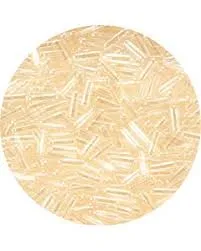
Nov . 06, 2024 18:33 Back to list
hydroxypropyl methylcellulose uses
The Versatile Uses of Hydroxypropyl Methylcellulose (HPMC)
Hydroxypropyl methylcellulose (HPMC) is a versatile, non-ionic cellulose ether that has gained immense popularity across various industries due to its unique properties. This semi-synthetic polymer is derived from natural cellulose and is commonly used as a thickening agent, film-former, and stabilizer. Its diverse applications span fields such as pharmaceuticals, food, cosmetics, and construction, making it an essential component in many products.
Pharmaceutical Applications
In the pharmaceutical industry, HPMC plays a critical role in formulating medication. It is widely used as a binding agent in tablet production, ensuring that the active ingredients are effectively adhered together. Additionally, HPMC is utilized in controlled-release formulations, allowing for the gradual release of drugs into the bloodstream, which can significantly enhance their therapeutic effects. It also acts as an important excipient in capsules and coatings, providing a smooth release of the medication and improving the patient experience.
Food Industry Uses
HPMC is also prevalent in the food industry, where it serves as a food additive to enhance texture and stability. It is commonly used in gluten-free products as a substitute for gluten, providing the necessary structure and elasticity to baked goods. HPMC imparts creaminess to sauces and dressings, improving mouthfeel and viscosity. Moreover, it functions as a stabilizer in ice creams and dairy products, preventing the formation of ice crystals and ensuring a consistent product.
hydroxypropyl methylcellulose uses

Cosmetic and Personal Care Products
In the realm of cosmetics and personal care, HPMC is appreciated for its thickening and emulsifying properties. It is found in a wide range of products, including lotions, creams, shampoos, and conditioners. HPMC helps to improve the texture and application of these products while enhancing moisture retention. Its film-forming capabilities contribute to the durability and water resistance of cosmetic formulations, making it a popular choice in sunscreens and long-lasting makeup products.
Construction and Building Materials
The construction industry has also recognized the benefits of HPMC, particularly in tile adhesives, cement-based mortars, and joint compounds. It acts as a thickener that improves the workability of these materials, allowing for easier application while maintaining their stability. HPMC enhances water retention in mortars, ensuring better adhesion and reducing the risk of shrinkage cracks during the curing process. Its effectiveness as a bonding agent contributes to the longevity and durability of construction materials.
Conclusion
Hydroxypropyl methylcellulose is undoubtedly a multifunctional ingredient that plays a significant role in various sectors. Its ability to enhance the texture, stability, and performance of countless products makes it an invaluable component. As industries continue to evolve and seek innovative solutions, HPMC will likely remain a cornerstone ingredient, driving advancements in pharmaceuticals, food production, cosmetics, and construction materials. The continued exploration and application of HPMC will undoubtedly lead to further improvements and formulations that benefit both manufacturers and consumers alike.
-
Versatile Hpmc Uses in Different Industries
NewsJun.19,2025
-
Redispersible Powder's Role in Enhancing Durability of Construction Products
NewsJun.19,2025
-
Hydroxyethyl Cellulose Applications Driving Green Industrial Processes
NewsJun.19,2025
-
Exploring Different Redispersible Polymer Powder
NewsJun.19,2025
-
Choosing the Right Mortar Bonding Agent
NewsJun.19,2025
-
Applications and Significance of China Hpmc in Modern Industries
NewsJun.19,2025







